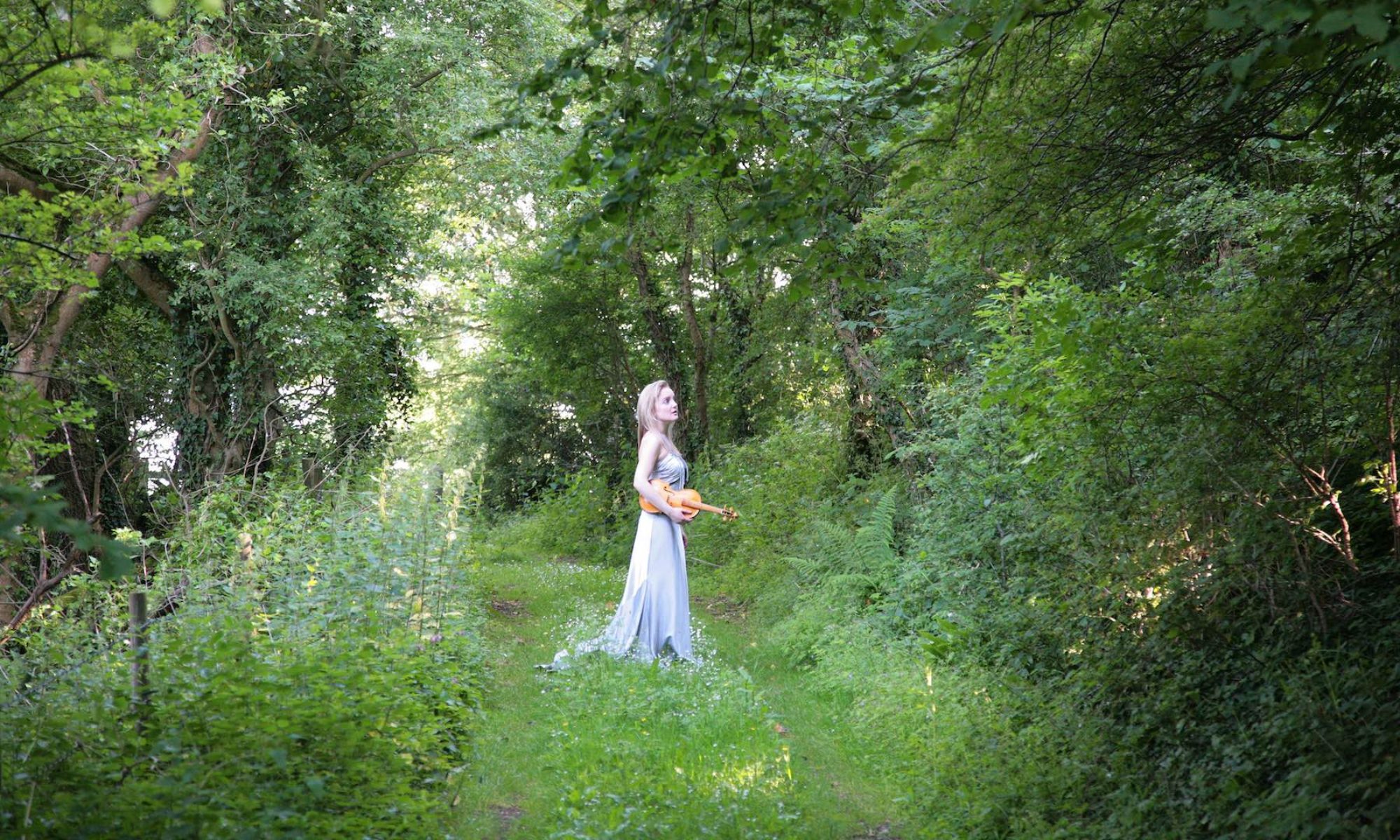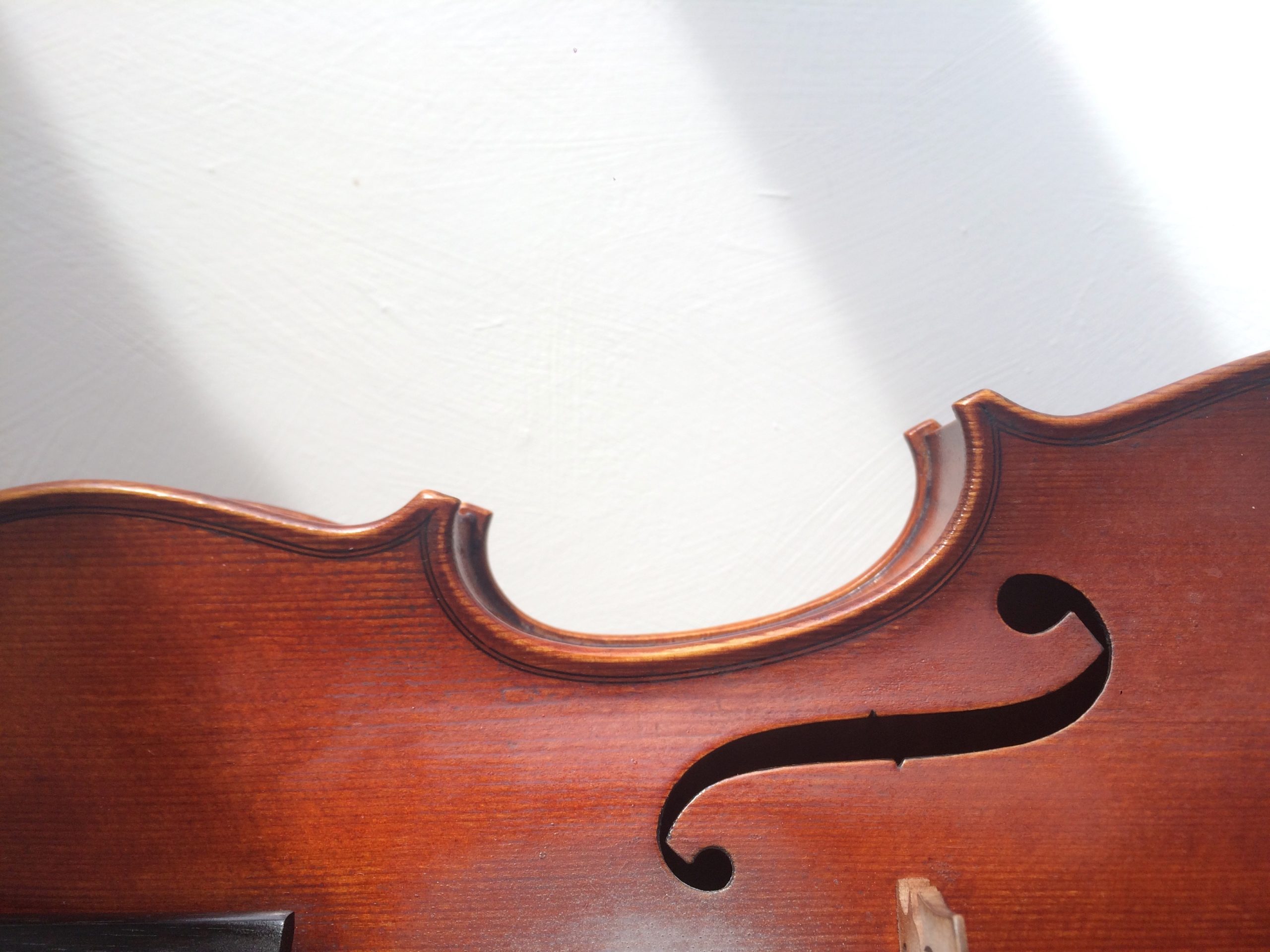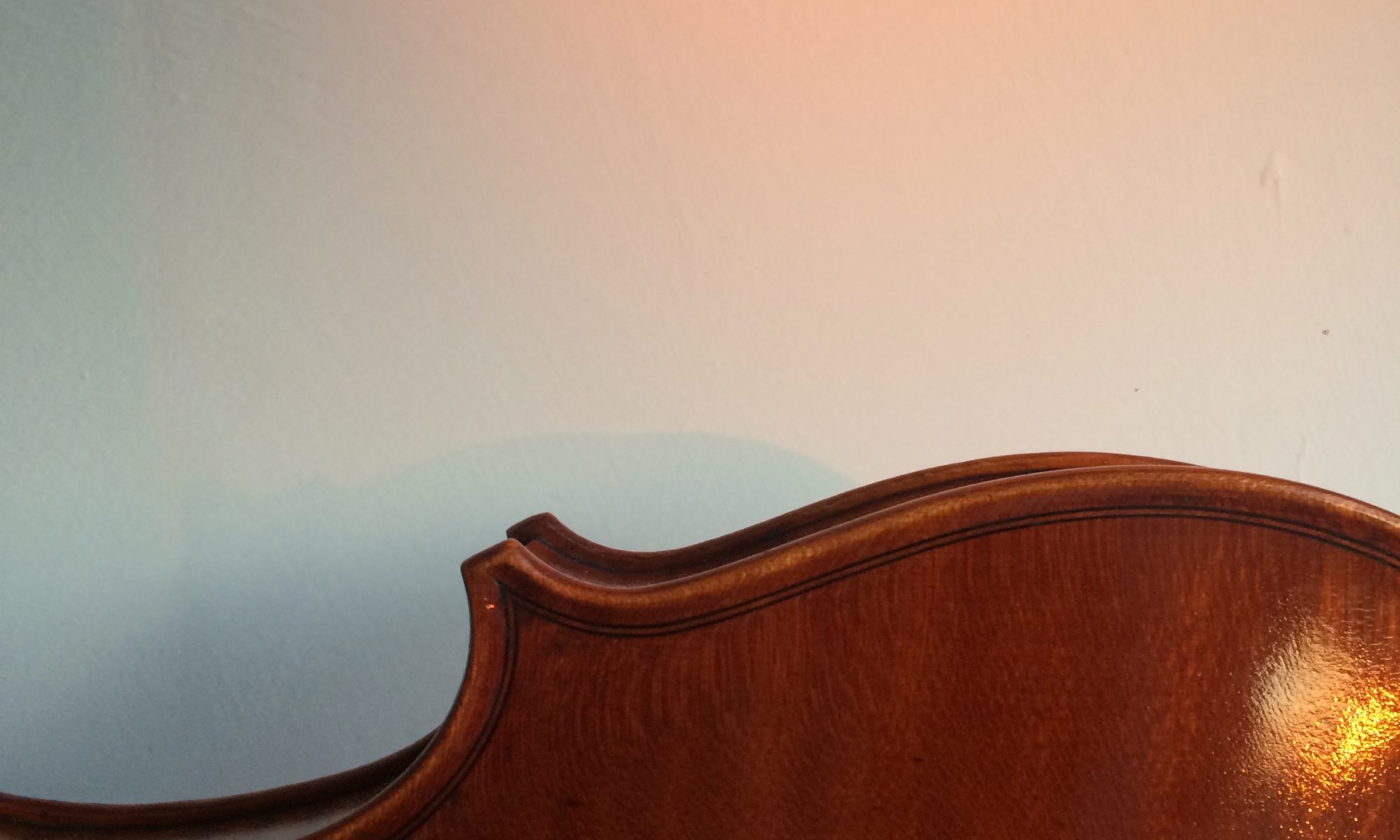This morning I saw a spider spinning an enormous web. It must have been working from sometime in the night, because already in the low sunlight of this autumn morning it had worked its way towards the centre. There was only a small amount of framework left in the middle, which the spider was busy filling in with those neat little lateral threads.
The spider was extremely systematic. Its whole body was a spinning tool. Imagine being built as a crochet hook. That’s what the spider was. As the thread was produced, each leg worked to process it. The entire web was pulled towards the centre by a couple of the legs while some of the others attached the thread carefully to the existing structure. I shall never again complain that spiders have ‘too many legs’.
The spider had chosen a honeysuckle bough as one of its supports. The spider notices things, and connects them.
Later, I was practising Corelli after going through the arpeggiation exercise in Geminiani’s violin treatise. It’s easy to pick up each music book in isolation in the here and now, but it’s useful if we think about the relationships between musicians in history, and the intention of approaching music in an ‘historically informed’ way helps us to do that. I found it interesting to think about the relationship between Corelli and his pupil and orchestrator Geminiani. Having just started full-time playing in the under-the-collarbone position that Geminiani advocates, I felt as though I was getting new perspectives on Corelli’s music, and on the relationship between how it feels and how it sounds. How did those two people interact? How did Corelli hold his violin? What did it sound like when Geminiani played Corelli’s music? How many people studied Geminiani’s treatise and learned that way? Many people comment on how Corelli’s music doesn’t go particularly high, but is virtuosic with its chords and fast figurations. A violin held against the top of the ribcage is actually pretty stable, and suits all of these things.
I’m discovering these things through feel, and through being present. In my practice, I’m connecting my living presence to the historical figures of Corelli and Geminiani. There’s a web between us.
How often do musicians reach back through time, and make connections afresh! We are deft spiders, connecting ideas and musical practices.


